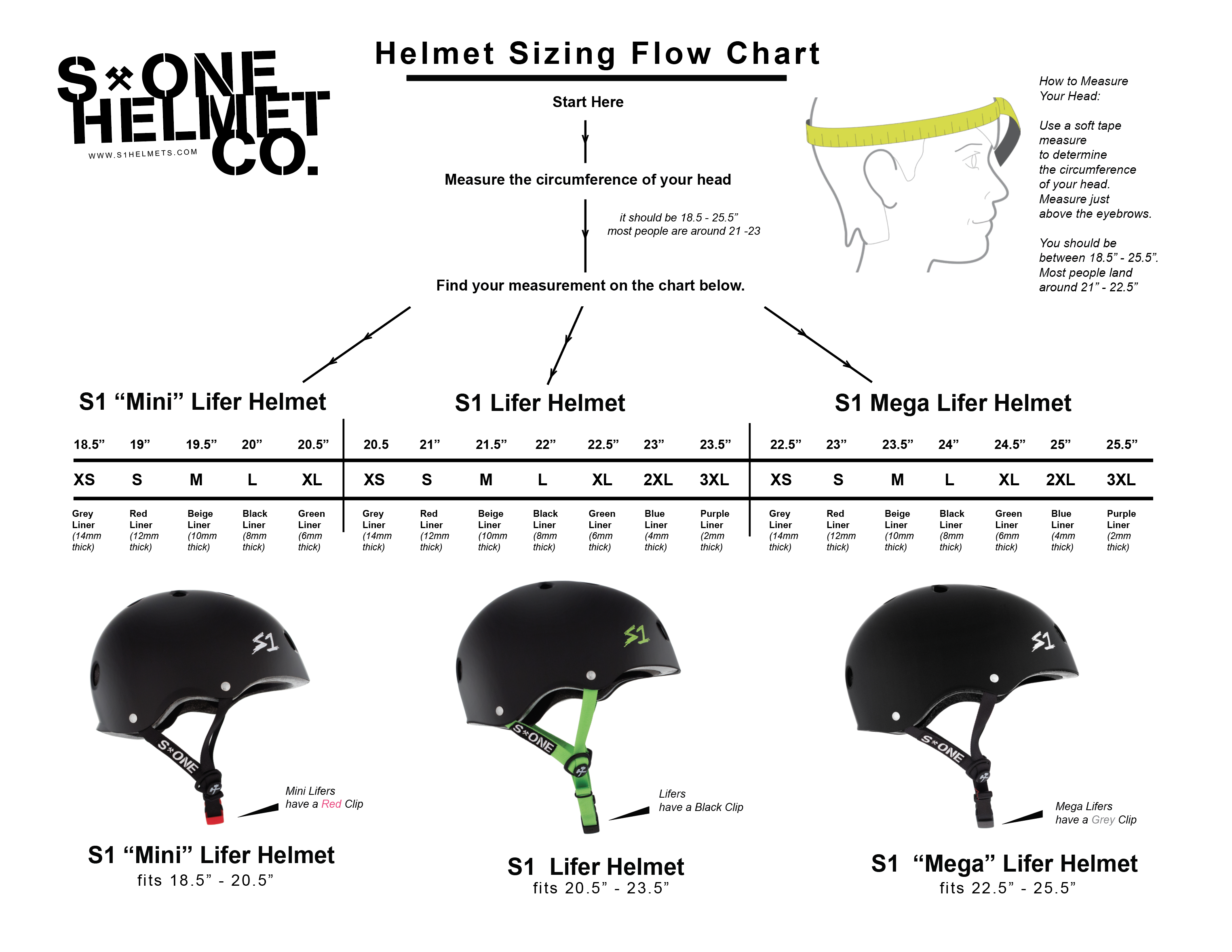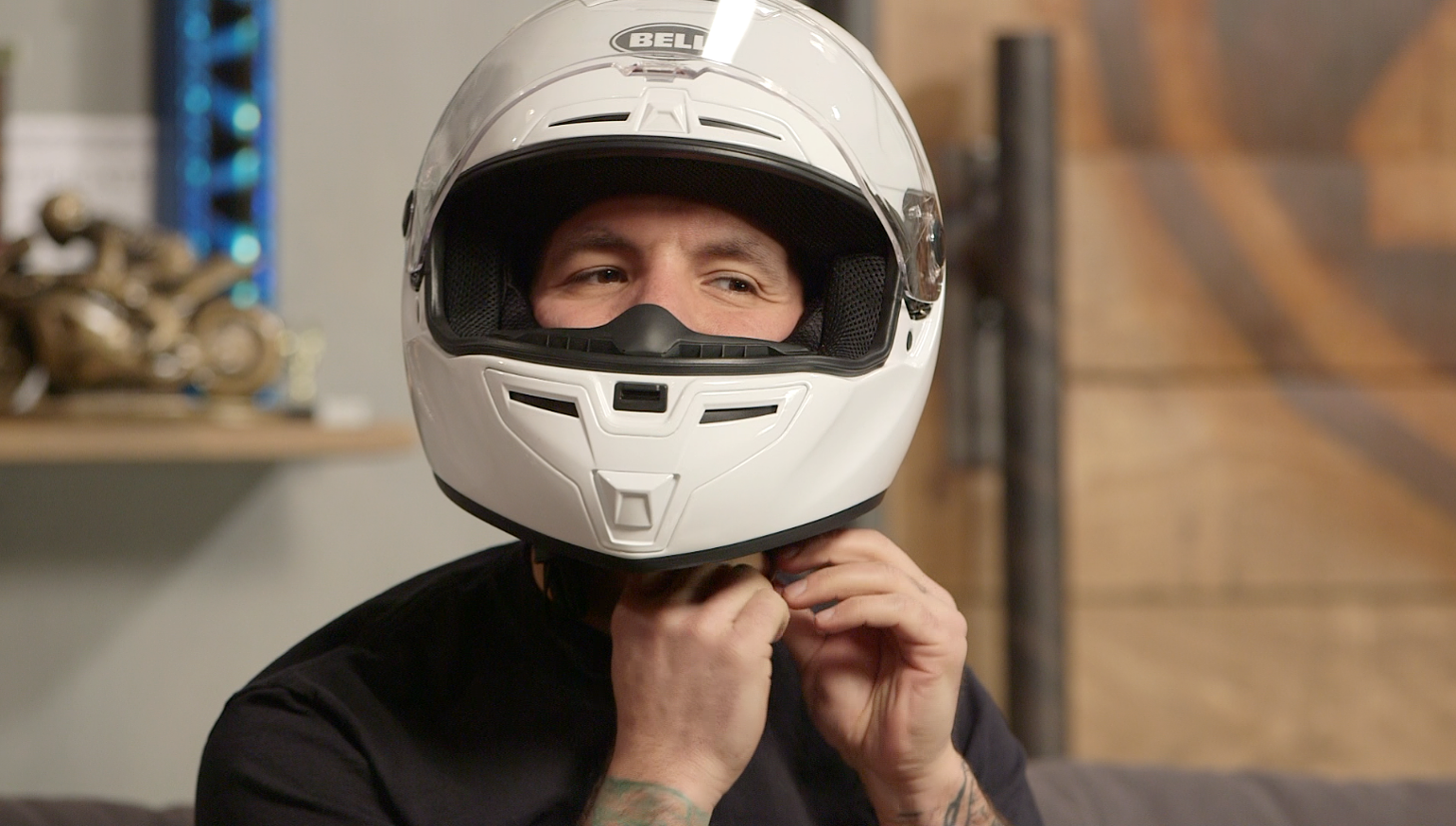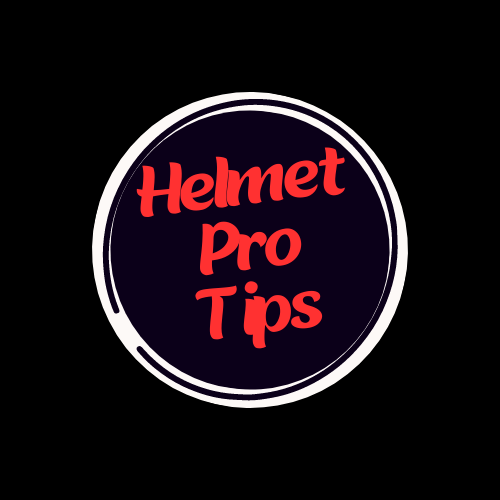Motorcycle helmet size charts typically do not categorize by age. Helmet sizing is based on head circumference measurements in inches or centimeters.
Selecting a motorcycle helmet that fits correctly is crucial for safety and comfort while riding. A well-fitting helmet can significantly reduce the risk of serious injury in the event of an accident. Buyers should measure their head at the widest point, which is usually an inch above the eyebrows, to find their correct helmet size.
The measurement can then be compared to a manufacturer’s size chart to determine the appropriate helmet. It is important to note that different brands may have slight variations in sizing, so trying on a helmet before purchasing is recommended. Keep in mind that a helmet should fit snugly without causing discomfort or pressure points. Checking the size chart of the specific helmet brand and model you’re interested in ensures you get the fit right the first time. Remember, safety should never be compromised for style or presumed age appropriateness.

Credit: shop.s1helmets.com
Importance Of Proper Helmet Fit
Ensuring a proper helmet fit is vital for riders of all ages. A helmet that doesn’t fit right can lead to serious injuries during an accident. It must sit snugly on the head without being too tight. This prevents it from shifting while you ride.
A helmet that’s too small will be uncomfortable and may not offer enough protection. One that’s too big can come off in a crash. With the correct size, riders can feel comfy and stay safe every time they hop on their bike.
For young riders, parents should check the fit regularly. Kids grow quickly and may outgrow their helmets fast. A well-fitting helmet can be a partner for their adventures, providing protection throughout their growth.
Measuring Head Size For Helmets
To measure your head for a helmet, you need a soft measuring tape. Wrap the tape around your head, just above your eyebrows. Ensure the tape is level from front to back. Write down the measurement in centimeters. This number helps you find the right helmet size. Kids need helmets too, so it’s important to measure their heads the same way.
Refer to helmet size charts using your measurement. Charts often list ages as a guide. Remember, head sizes vary, so use the measurement for the best fit. It’s the key step to riding safely.
| Age Group | Head Circumference (cm) | Helmet Size |
|---|---|---|
| Toddlers (1-3 years) | 45-51 cm | XS |
| Children (3-5 years) | 50-54 cm | S |
| Kids (5-8 years) | 50-56 cm | M |
| Young Teens (9-12 years) | 51-56 cm | L |
Helmet Size Chart Explained
Choosing the right helmet size is crucial. Head circumference is key to finding the perfect fit. Measure it above your eyebrows and around the back of your head. Check this measurement against a size chart.
Kids’ helmet sizes can differ from adults. Age is a starting point, but head size varies for everyone. Look for the measured size in centimeters or inches on the chart. Use the age column to guide you, but measure to be sure.
| Age Group | Head Circumference (inches) | Head Circumference (centimeters) | Helmet Size |
|---|---|---|---|
| Toddlers (2-3 yrs) | 18″ – 19.25″ | 46 – 49 cm | XS |
| Children (4-10 yrs) | 19.75″ – 20.5″ | 50 – 52 cm | S |
| Teens (11-14 yrs) | 20.85″ – 21.65″ | 53 – 55 cm | M |
Adjustments For An Accurate Fit
Getting the right fit for your motorcycle helmet is crucial. Sometimes, the helmet may feel too loose or tight. Pads and liners can help adjust the fit. If the helmet wobbles, try thicker cheek pads. This can make the helmet snug.
Thin liners are best if the helmet feels tight. It’s important to keep comfort in mind. A helmet shouldn’t press on your head too much. If adjustments don’t work, consider a different helmet size. Always opt for safety and comfort. Kids grow fast, so check their helmet size often.
Maintaining Your Helmet For Optimal Fit
Keeping your motorcycle helmet in top shape is vital. Perform regular safety checks to make sure it fits well. Look for possible wear and tear that could affect its function. Straps can stretch; foam may compress over time, altering the fit. It’s essential to adjust these components regularly to ensure continued protection.
Knowing when to get a new helmet is crucial for safety. A few clear signs indicate it’s time. If the helmet has visible cracks, it won’t protect you well. After a significant impact, the helmet’s ability to safeguard you is compromised. Also, if the interior lining becomes loose or it no longer fits snugly, consider replacing it. Watch out for outdated safety standards, as helmets should meet current regulations.

Credit: www.bikeradar.com
Common Myths And Misconceptions
Many people think that a helmet’s size does not affect its protection level. This is not true. A helmet must fit properly to provide maximum safety. Children’s helmets should be chosen with care, as their heads are still growing.
Sizing charts can help pick the right helmet for a child’s age. But remember, every child is different. It’s important to measure the head and check the fit. With correct sizing, a helmet can protect much better.
| Age | Head Circumference (Inches) | Helmet Size |
|---|---|---|
| 5-7 years | 19.75″ – 21.25″ | Small |
| 8-10 years | 21.25″ – 22.75″ | Medium |
| 11-14 years | 22.75″ – 24.00″ | Large |

Credit: www.revzilla.com
FAQ
How To Measure For Motorcycle Helmet Size?
To accurately measure for a motorcycle helmet, wrap a flexible tape measure around your head, just above your eyebrows. Ensure the tape is snug for precise results. Record the measurement in centimeters, as most size charts use this unit.
What Age Does Helmet Size Chart Cover?
Motorcycle helmet size charts typically cater to all ages, starting from toddlers to adults. It’s essential to check the manufacturer’s chart as sizing may vary by brand and model.
Does Head Shape Affect Motorcycle Helmet Fit?
Yes, head shape significantly affects helmet fit. Helmets are designed for different head shapes—round oval, intermediate oval, and long oval. Ensure the shape matches your head for comfort and safety.
Can Children Use Adult Motorcycle Helmet Sizes?
Children should not use adult helmet sizes due to safety concerns. Helmets for kids are specially designed with their head size and structure in mind. Always refer to youth-specific size charts for the best fit.
Conclusion
Selecting the right helmet is crucial for any rider’s safety and comfort. Our size chart by age guide aims to simplify this choice. Remember, proper fit ensures maximum protection. Always measure before you buy, and consult with experts if in doubt.
Ride safe and gear up correctly for the journey ahead.
